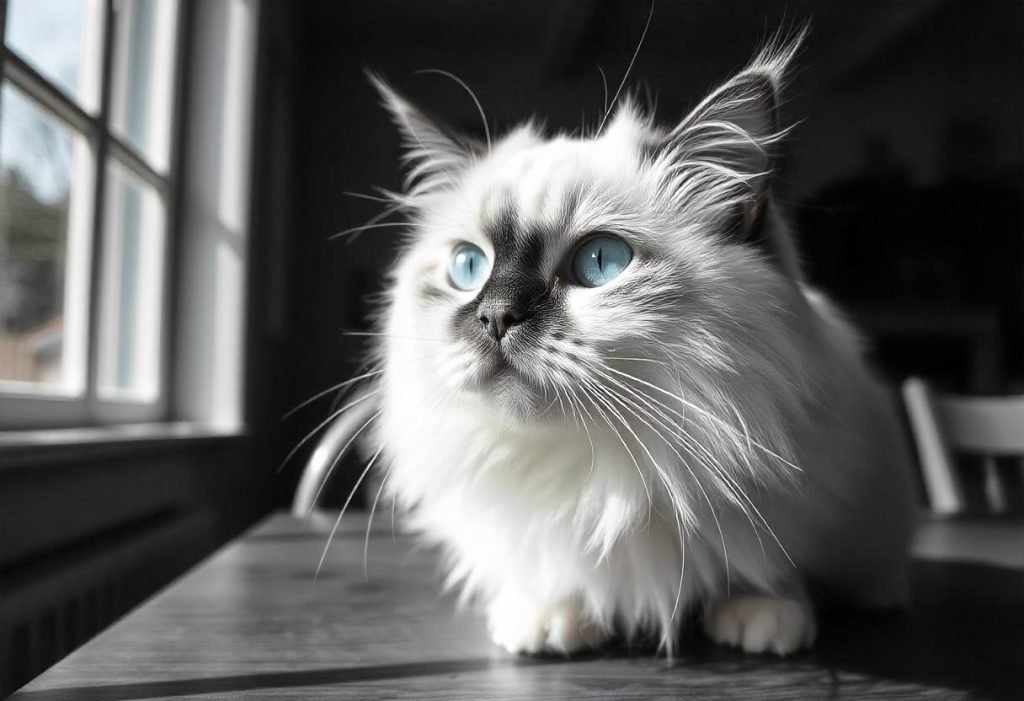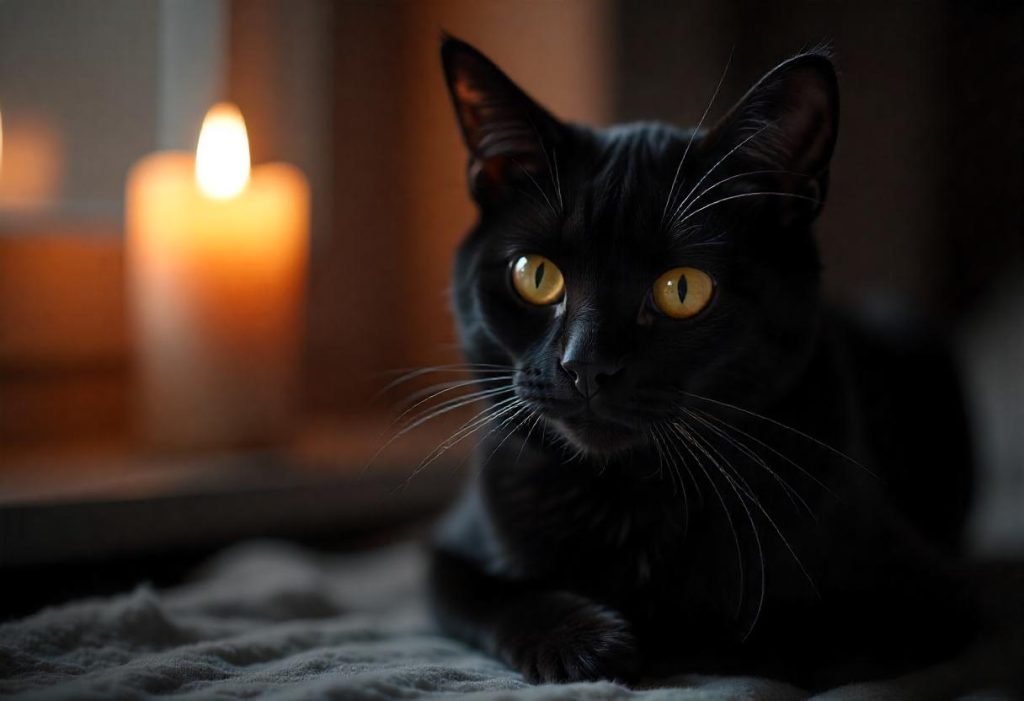Every cat owner loves to see their furry friend happy, healthy, and full of energy.
But what happens when you notice something a little off about your cat’s nose? You might find yourself worried, wondering what’s going on and how to help.
Cat Nose Color: A Unique Feature
A cat’s nose is a fascinating feature, often overlooked but packed with unique details.
The nose pad, the moist, leathery part of the nose, is not only essential for smelling, but it also plays a role in regulating body temperature and can be a good indicator of their health.
What Causes Cat Nose Color Changes?
While a cat’s nose color is typically consistent throughout their life, it’s possible for their nose to change color.
Here are some of the most common reasons why a cat’s nose color might change:
- Pigmentation: The color of a cat’s nose is determined by their pigmentation, which is the amount and type of melanin (a pigment) in their skin. Some cats have a naturally darker nose color, while others have a lighter nose color.
- Age: A cat’s nose color can change as they age, with the pigment fading and becoming lighter.
- Sun Exposure: Sun exposure can also cause the nose to fade, similar to how our skin tans or burns.
- Exposure to Chemicals: Exposure to harsh chemicals can also cause a change in nose color.
- Health Conditions: Certain health conditions can also affect nose color, including:
- Feline Leukemia Virus (FeLV): FeLV is a virus that can weaken the immune system and lead to various health problems, including nose discoloration.
- Feline Immunodeficiency Virus (FIV): FIV is a virus that weakens the immune system and can cause a variety of health problems, including nose discoloration.
- Hyperthyroidism: An overactive thyroid gland can cause a variety of symptoms, including nose discoloration.
- Skin Infections: Bacterial or fungal infections of the nose can cause a change in nose color.
- Vitamin Deficiencies: Vitamin deficiencies can also lead to a change in nose color.
- Weather: A cat’s nose color can be more prominent during certain seasons. In the winter, the pigment can become lighter due to less sun exposure.

Common Cat Nose Colors
- Black: Black nose pads are common in cats of all breeds and colors.
- Pink: Pink nose pads are common in cats with lighter fur colors, like white or cream.
- Brown: Brown nose pads are common in cats with brown or tabby fur colors.
- Liver: Liver nose pads are a reddish-brown color and are often seen in cats with liver-colored fur.
- Blue: Blue nose pads are a bluish-grey color and are often seen in cats with blue or lilac fur.
- Red: Red nose pads are a reddish-orange color and are often seen in cats with orange or red fur.
A Case Study: Whiskers’ Changing Nose
Whiskers, a 6-year-old Maine Coon, had a dark brown nose pad. His owner, David, noticed that his nose had gotten lighter as he’d aged.
“It was barely noticeable at first,” David says, “But his nose has become much lighter over the last couple of years.”
David took Whiskers to the vet, who examined his nose. The veterinarian explained that the change in nose color was likely due to aging.
“The pigment in the nose can fade as a cat ages,” the veterinarian explained. “It’s a common occurrence, especially in older cats. It’s not necessarily a sign of illness.”

Diagnosing Cat Nose Color Changes
Diagnosing the cause of a change in nose color in cats requires a thorough examination by a veterinarian.
They will perform a physical exam, ask about your cat’s history, and often recommend some additional testing.
- Physical Examination: The veterinarian will assess your cat’s overall health, including their weight, body condition, and any signs of illness. They will check your cat’s temperature, pulse, and respiration, and they will examine their eyes, ears, nose, teeth, and gums. They will also feel your cat’s abdomen and lymph nodes for any abnormalities.
- Bloodwork: Blood tests can help rule out a variety of medical conditions, such as hyperthyroidism, kidney disease, liver disease, or infections.
- Urinalysis: A urinalysis can detect urinary tract infections, kidney problems, and other conditions.
- Radiographs (X-rays): X-rays can be used to examine bones, organs, and other structures, helping to diagnose a variety of conditions.
- Ultrasound: Ultrasound uses sound waves to create images of internal organs, providing a detailed view of the organs and surrounding structures.
Treating Cat Nose Color Changes
Treatment for a change in nose color depends on the underlying cause.
- Allergies: Treatment for allergies might involve:
- Environmental Control: Minimize exposure to the offending allergen.
- Antihistamines: Antihistamines can help reduce itching and inflammation.
- Corticosteroids: Corticosteroids are potent anti-inflammatory medications that can help reduce itching and inflammation, but they can have side effects.
- Immunomodulators: Immunomodulators can help suppress the immune system’s response to allergens, reducing allergy symptoms.
- Feline Leukemia Virus (FeLV) and Feline Immunodeficiency Virus (FIV): There is no cure for FeLV or FIV, but your veterinarian can prescribe medications to manage symptoms and help to boost the cat’s immune system.
- Hyperthyroidism: Treatment for hyperthyroidism often involves medication to manage the thyroid gland.
- Skin Infections: Treatment for skin infections might involve:
- Medications: Antibiotics or antifungal medications can be used to treat skin infections.
- Medicated Shampoos: Medicated shampoos can help to clean the skin and reduce infection.
- Vitamin Deficiencies: Treatment for vitamin deficiencies might involve:
- Supplements: Supplements can help to correct vitamin deficiencies.
- Dietary Changes: Dietary changes can also help to correct vitamin deficiencies.
A Case Study: Whiskers’ Nose Color Changes
Whiskers, the Maine Coon with a lighter nose, started experiencing a lot of sneezing and had a runny nose.
His owner, David, also noticed that his eyes were watery. “He wasn’t his usual playful self,” David says. “He was quieter than usual, and he kept sneezing and pawing at his eyes.”
David took Whiskers to the vet. The veterinarian suspected that Whiskers had an upper respiratory infection (URI), a common cause of sneezing and nasal discharge in cats.
The veterinarian prescribed antibiotics to prevent a secondary bacterial infection.
“After a few days on the antibiotics,” David says, “Whiskers felt much better, and his nose color seemed to get a little darker. He was back to his normal self, happily playing and purring.”
Conclusion
While a change in nose color in cats can sometimes be a normal behavior, it’s important to be aware of the possible underlying causes.
If you notice a sudden or dramatic change in your cat’s nose color, or if they’re exhibiting any other unusual symptoms, it’s always a good idea to consult your veterinarian.
By seeking professional advice and taking appropriate steps, you can help your cat live a healthy and happy life.

Leave a Reply